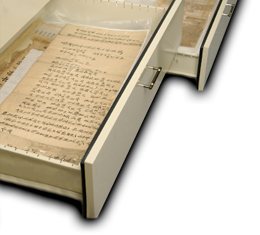(by order of publication date)
1. Hsing-Yueh, Lin. “Taiwanese Artist Groups and Developments,” in Annual of Arts in Taiwan, Taipei: Hsiung Shih, 1989, pp. 513-520
2. Chuan-Ying, Yen. “Art and Literature Movements in the 1930s.” Collected Papers of International Conference for Taiwanese History during Japanese Colonial Rule, Department of History, National Taiwan University, 1993, pp. 535-547
3. Chuan-Ying, Yen. “The Division and End of Later Art during Japanese Colonial Rule.” What Is Taiwan? Collected Papers of Modern Taiwanese Art and Cultural Identification, Taipei: Council for Cultural Affairs, 1997, pp. 17-28.
4. Po-Ting, Lin. “The Activities of Artist Groups during Japanese Colonial Rule.” What Is Taiwan? Collected Papers of Modern Taiwanese Art and Cultural Identification, Taipei: Council for Cultural Affairs, 1997, pp. 231-242.
5. Chi-Hui, Huang. “War and Art: Art Activities and Painting Styles during 1937 - 1945 in Taiwan” What Is Taiwan? Collected Papers of Modern Taiwanese Art and Cultural Identification, Taipei: Council for Cultural Affairs, 1997, pp. 265-289.
6. Chuan-Ying, Yen. A Chronology of Important Art Events in Taiwan, Taipei: Hsiung Shih, 1998.
7. Lifa, Shaih. Taiwanese Art Movement under Japanese Ruling. Taipei: Artist Magazine, 1998.
8. Jin-Yuan, Liao. “The Sendan Group - Painter Gobara Koto.” Artist Magazine, 299 (2000.04) pp. 388-400.
9. Chuan-ing, Yen, translator. The Mood of Landscape: Modern Taiwanese Art Literature Study Guide. Taipei: Hsiung Shih, 2001.
10. Qingshui liu ran ju: Yang Zhaojia liu zhen ji, edited by Chang Yen-Hsien and Chen Tsun-Shing, Taipei: Wu San-lien Foundation for Taiwan Historical Materials, 2003.
11. Zhao-Jia, Yang. The Memoirs of Yang Zhao-Jia. Taipei: Sanmin, 2004.
12. Chen-Ching, Lin. Explore and Discover: Taiwanese Art History in Microcosm. Taipei: Bo Young Cultural Co., 2014.
13. Recreating Chiayi the Capital of Painting ‧ 2015 - New Look Exhibition of the Chun Meng Painting Society and Ink-and-color Paintings, edited by Fang Chien-Ju, Chiayi: Cultural Affairs Bureau, Chiayi City, 2015.
14. Min-Shyan, Lim. “Aggregation & Blooming: Artists Groups and the Development of Fine Arts in Taiwan,” in Aggregation & Blooming: Artists Groups and the Development of Fine Arts in Taiwan, edited by Tsai Chao-yi, Taichung: National Taiwan Museum of Fine Arts, 2017, pp. 10-43.
15. Song-Nian, Kuo. Home Gazing: My Father Kuo Hsueh-Hu’s Life in Art. Taipei: Marco Polo Press, 2018.
16. Historical Compilation of Artist Groups in Taiwan 1: Artist Groups in Japanese Colonial Period (1895 - 1945), edited by Artist Magazine, Taipei: Artist Magazine, 2019.
17. Lin, Mun-Lee, et al. The Everlasting Bloom: Rediscovering Taiwanese Modern Art. Taipei: National Taipei University of Education, 2020.
